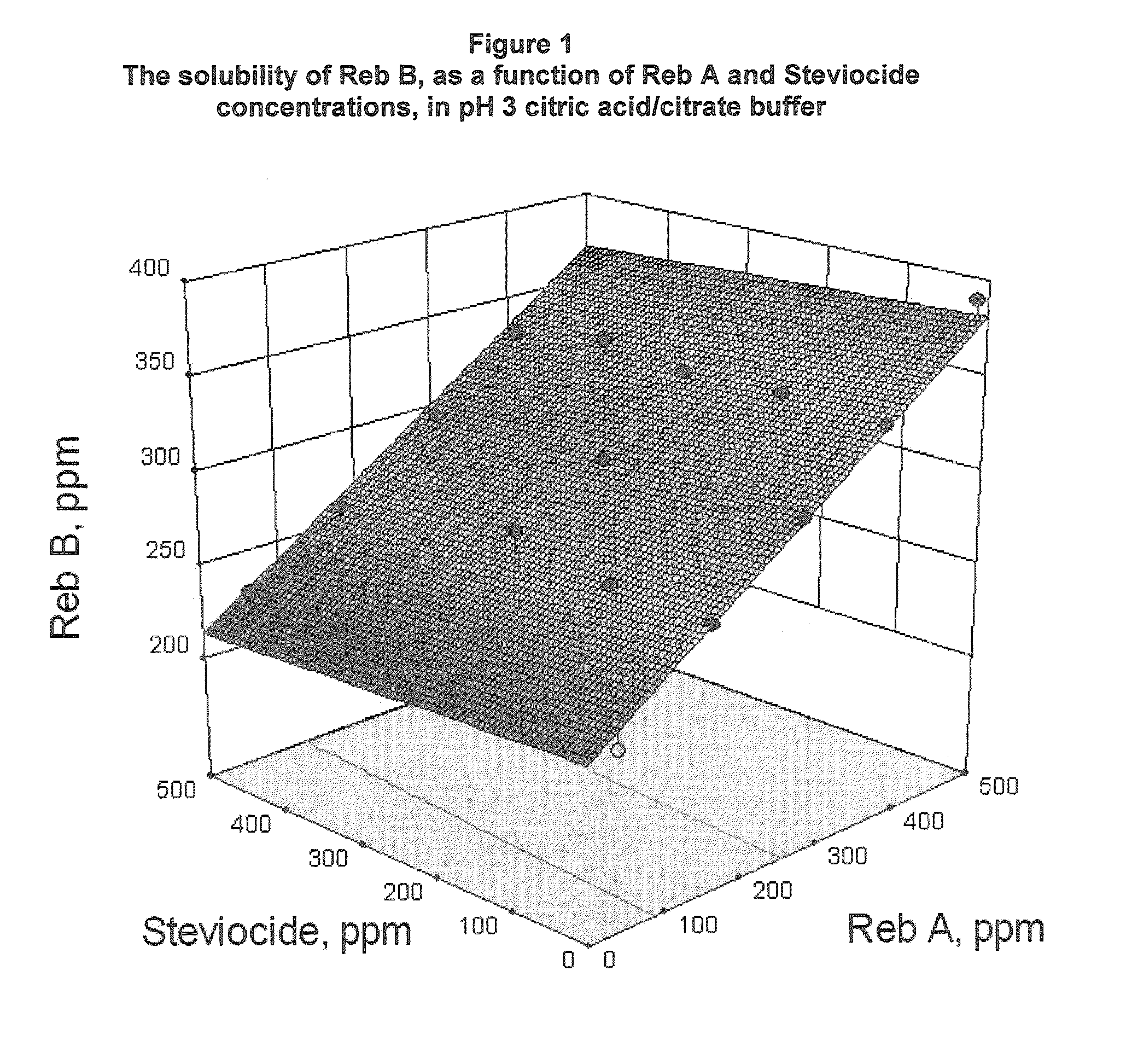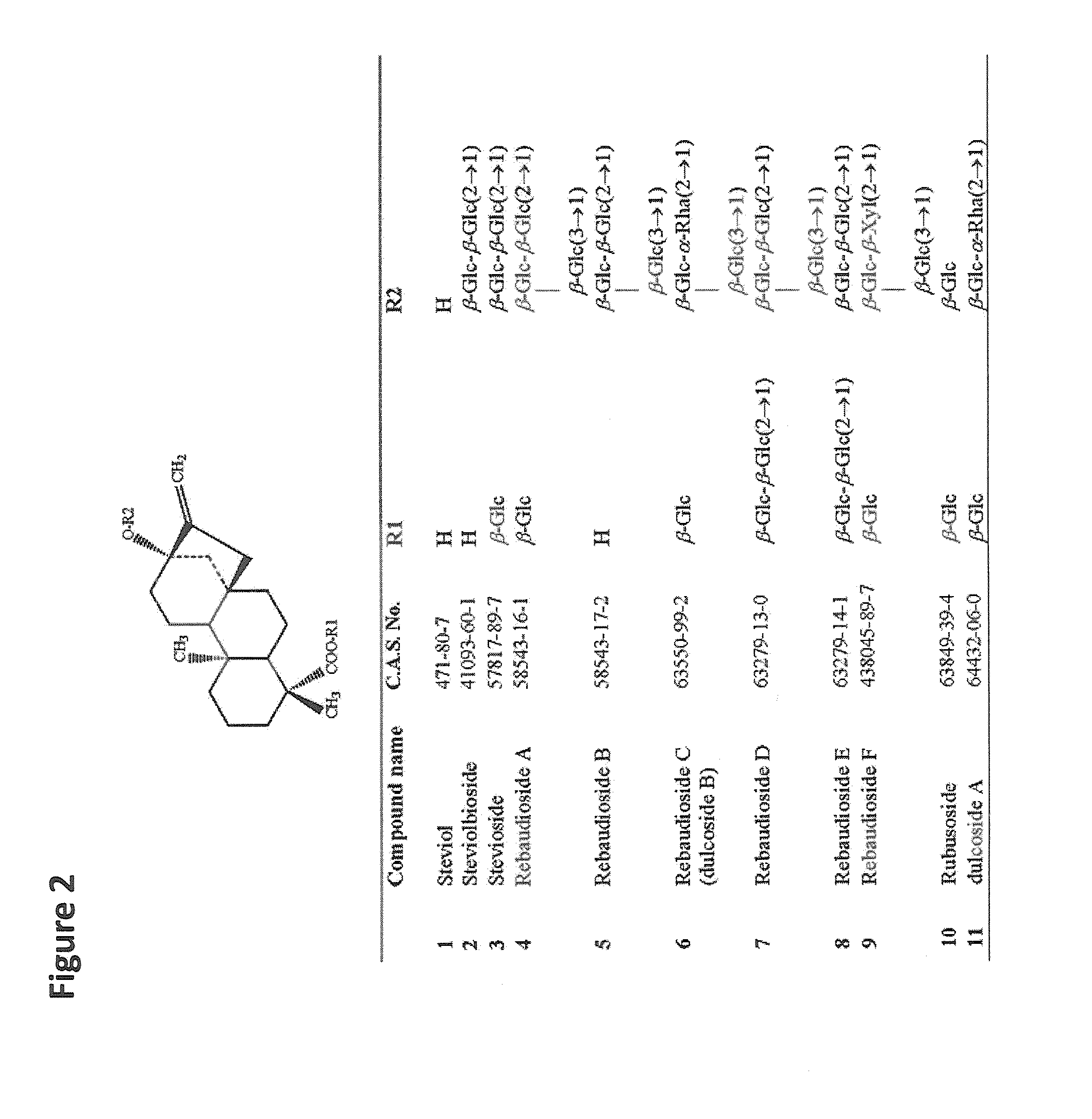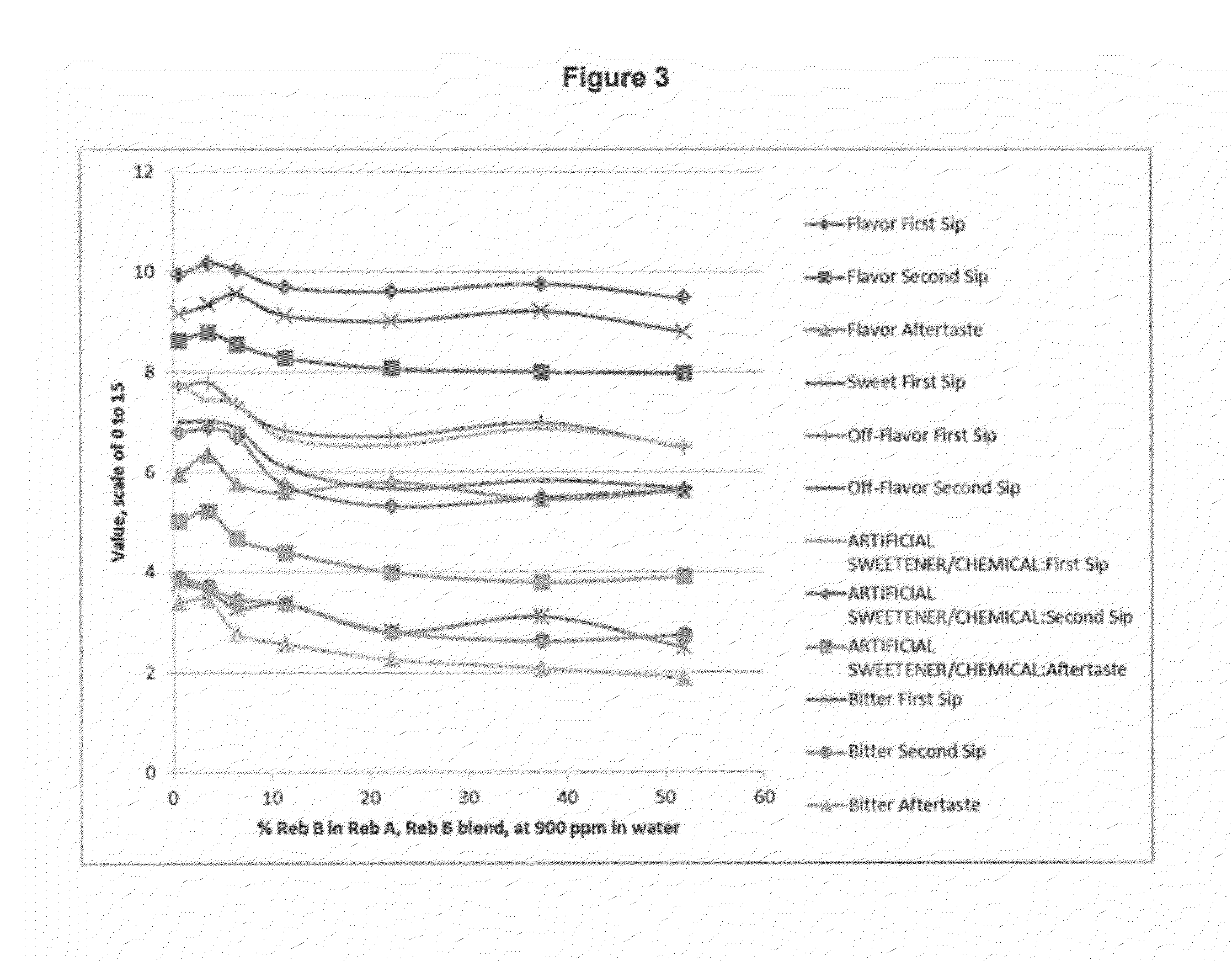Stevia Blends Containing Rebaudioside B
a technology of stevia and rebaudioside, which is applied in the field of stevia blends containing rebaudioside b, can solve the problems of unsatisfactory taste profiles for consumers, and achieve the effects of improving taste, hydration or dissolution properties, and improving flow, or solubility
- Summary
- Abstract
- Description
- Claims
- Application Information
AI Technical Summary
Benefits of technology
Problems solved by technology
Method used
Image
Examples
example 1
Preference Testing of Commercial Mixtures of Steviol Glycosides and Rebaudioside B Enriched Glycoside Mixtures
[0044]A commercial blend of a steviol glycosides was dissolved in 0.0056 M citric acid buffer pH 3.1. A solution containing a commercially available sweetening composition containing 97% rebaudioside A was similarly prepared.
TABLE 197% Rebaudioside A and Commercial Blend Compositions.97% rebaudiosideCommercialGlycosideA, mgblend, mg / lRebaudioside A473437Stevioside135Rebaudioside B1417Rebaudioside C09Rebaudioside D020Total498518
[0045]Thirty-one Tate & Lyle employees participated in paired comparison tests for sweetness and preference. The products were made up in pH 3.1 citric acid buffer (0.9 grams anhydrous citric acid (Tate & Lyle, Decatur, Ill.) and 0.26 grams sodium citrate dihydrate (Tate & Lyle, Decatur, Ill.) per liter and tested at room temperature in two ounce soufflé cups label with random three-digit codes. The presentation order was rotated. The panelists were as...
example 2
Preference Testing of 800 ppm Mixtures of Rebaudioside A or B Mixed with Stevioside
[0063]A taste panel was asked to compare a commercial mixture of rebaudioside A and stevioside to a 500 ppm sample of 97% rebaudioside A. The glycoside blend of steviol glycosides was dissolved in 0.0056 M citric acid buffer pH 3.1. A solution containing a commercially available sweetening composition containing 97% rebaudioside A was similarly prepared. Sample presentation was rotated and the samples of the two solutions (at room temperature) were presented to a panel of Tate & Lyle employees and they were asked to identify the solution that was sweeter and which they like better using the same instructions and questions as in Example 1. The results of the sweetness and preference questions were analyzed with the binomial test and the Thurstonian d′ calculated as in Example 1.
TABLE 597% Rebaudioside A and Rebaudioside Aand Stevioside Mixture Compositions.97% rebaudiosideMixture,GlycosideA, mgmg / lReba...
example 3
Preference Testing Mixtures of Rebaudioside A or B
[0068]A taste panel was asked to compare a commercial mixture of rebaudioside A and rebaudioside B and a 900 ppm sample of 97% rebaudioside A. Tate & Lyle employees participated in paired comparison tests for sweetness and preference. Samples were tested at room temperature in two ounce soufflé cups label with random three-digit codes. The presentation order was not rotated because of carryover of the off-flavor of rebaudioside A at 900 ppm. The panelist evaluated the test sample first and then the control 900 ppm rebaudioside A sample. The panelists were instructed not to re-taste the samples. Additionally, the panelists were required to wait one minute between testing samples and instructed to clear their palates with a 2% sucrose solution, an unsalted cracker, and bottled water. The panelists were asked to identify the solution that was sweeter and which they like better. The ballot was presented and the data was collected with SI...
PUM
 Login to View More
Login to View More Abstract
Description
Claims
Application Information
 Login to View More
Login to View More - R&D
- Intellectual Property
- Life Sciences
- Materials
- Tech Scout
- Unparalleled Data Quality
- Higher Quality Content
- 60% Fewer Hallucinations
Browse by: Latest US Patents, China's latest patents, Technical Efficacy Thesaurus, Application Domain, Technology Topic, Popular Technical Reports.
© 2025 PatSnap. All rights reserved.Legal|Privacy policy|Modern Slavery Act Transparency Statement|Sitemap|About US| Contact US: help@patsnap.com



